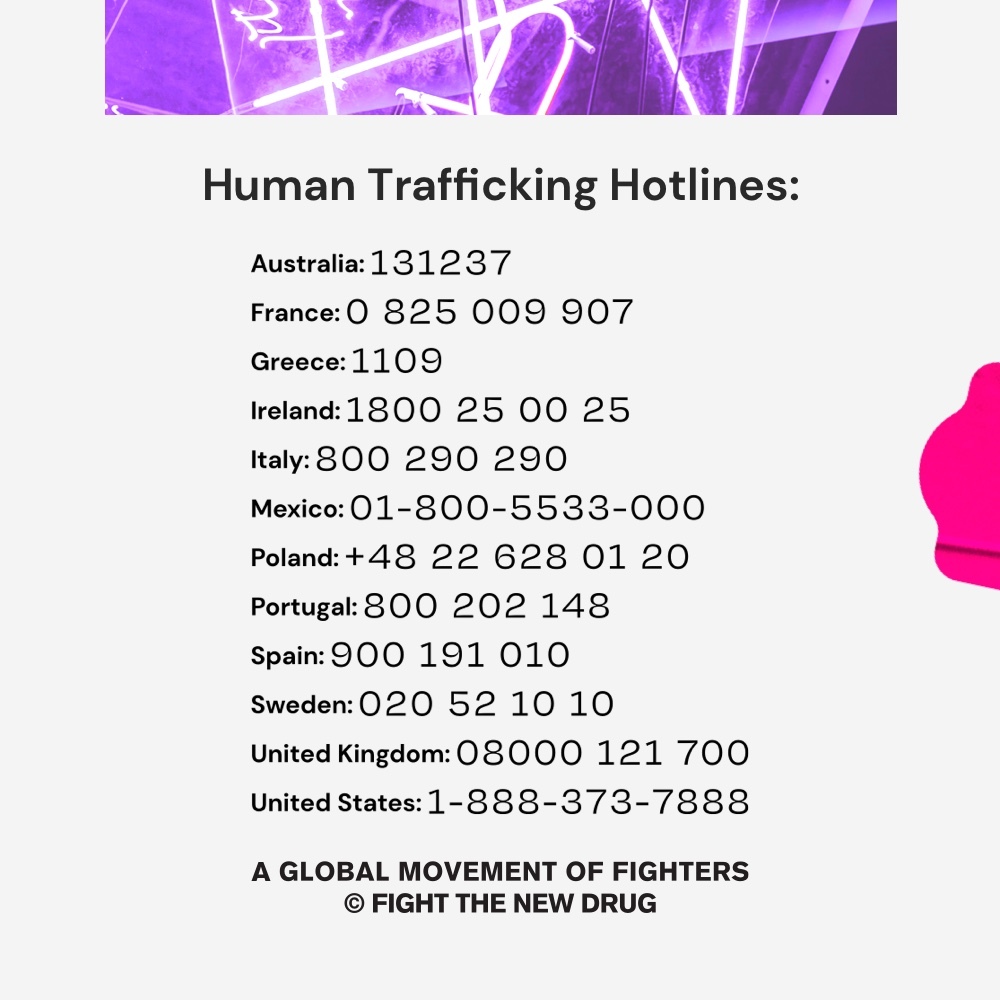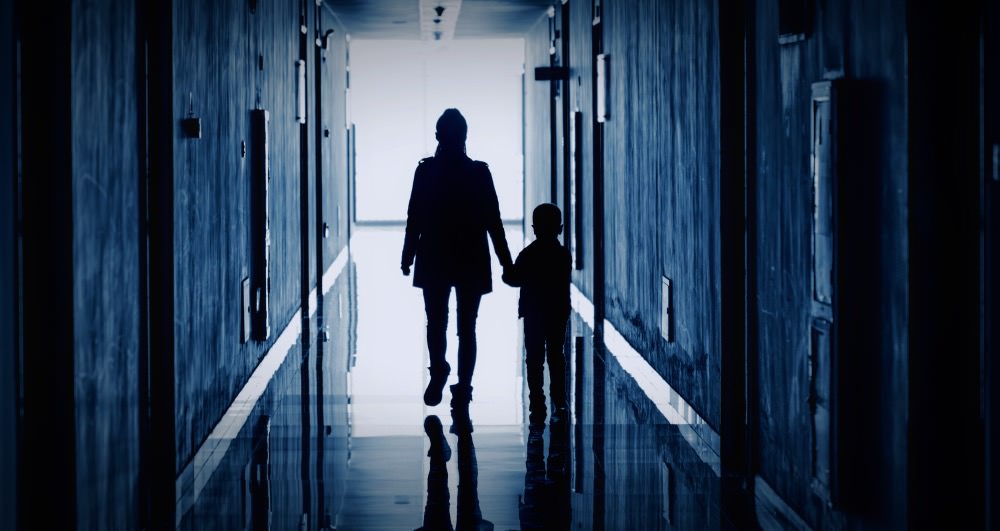Have you noticed a lot more urgency in the last year over the issue of child sex trafficking? We’re betting many of you have, but it’s okay if you haven’t.
The renewed passion people show for this global issue is great, but it has also posed some issues. With the recent excitement surrounding bringing awareness to child sex trafficking, there has also been a fair amount of misinformation that has flooded social media platforms.
Firstly, let’s address the basics—what exactly is child sex trafficking?
According to the National Center for Missing and Exploited Children (NCMEC), child sex trafficking occurs when a child under 18 is involved in a commercial sex act where sex is traded for money, food, shelter, drugs or anything else of value.
This crime is occurring in all types of communities throughout the United States and traffickers are making an alarming profit while victims endure rape and abuse. It’s important to remember that even if the child or underage teen believes it was his or her choice, they are a victim, and an adult or perpetrator is exploiting their vulnerabilities. A child cannot consent to sex with an adult, and there is no such thing as a “child prostitute.” In fact, that phrase should never be used when referring to child sex trafficking.
So, let’s get on to some more data and credible stats.
For the sake of victims, we think it’s important to focus on the facts, research, and their lived experiences. Here, we’ll be sharing responsibly-sourced information regarding sex trafficking as it exists in today’s world, resources for parents to help keep their kids safe, and experiences of real victims.
By the numbers: child sex trafficking
1. According to the Canadian Centre for Child Protection, 78% of reported child sexual abuse images depicted prepubescent children under the age of 12, and 63% of those children were under 8. (Canadian Centre for Child Protection)
2. While “child pornography” remains the legal term for this material, the subject matter is one of the most violent, horrific forms of child abuse possible. For this reason, those working to combat this type of abuse have begun using the term “child sexual abuse material” (CSAM), which more accurately conveys the content and is explicitly tied to the source of the problem. (Thorn)
3. Of the approximately 24.9 million victims of forced labor, about 4.8 million—about 19%—are trafficked for sex. Even more disturbingly, a little less than a quarter—an estimated 21%—of all sex trafficking victims are children. (ILO)
4. Though child sexual abuse material (CSAM) is a global issue, the United States remains one of the largest producers and consumers of child abuse content in the world. (Thorn)
5. People [would] rather believe that trafficking exists outside of [their] daily lives, where the elite roam. However, the reality is that trafficking exists in our own neighborhoods… Trafficking typically occurs after years of grooming and coercion and it takes place in almost every community in the United States. Almost every survivor I worked with considered their trafficker to be their boyfriend at some point in their lives. –Mary Bianculli, trafficking survivor case worker
6. Of domestic minor sex trafficking victims, 1 in 6 began being trafficked under the age of 12. (Thorn)
7. Almost half (45%) of domestic minor sex trafficking victims are African American. 27% are Caucasian, 21% Hispanic, and 8% “other”. (Thorn)
8. According to the cumulative findings of multiple studies and reports, a significant number of sex trafficking victims (3-36%) are trafficked by family members, and 27-60% of victims are trafficked by their “boyfriends.” (World Without Exploitation)
9. Of the trafficking victims who had been forced into porn production, the average age they began being filmed was 12.8 years old. (Thorn)
10. Of the more than 23,500 endangered runaways reported to NCMEC in 2019, one in six were likely victims of child sex trafficking. (NCMEC)
11. Technology is increasingly a part of grooming and trafficking. According to the research of victims who were trafficked in 2015, over half (55%) met their traffickers through the use of technology (i.e. online enticement, texting, app usage). (Thorn)
12. In 2018, tech companies reported over 45 million images of child sexual abuse material—more than double what was reported in 2017. (New York Times)
13. Child sex trafficking occurs in all 50 states. (NCMEC)
14. While any child can become a victim of trafficking, research has shown that traffickers often target children with increased vulnerabilities, such as:
-
- Children who are chronically missing or who frequently run away (especially 3+ missing incidents)
- Children who have experienced childhood sexual abuse, especially if the abuse was unreported or unaddressed, or resulted in the child being removed from the home
- Children who have experienced prior sexual assault or rape
- Children with significant substance abuse issues or who live with someone who has significant substance abuse issues
- Children who identify as LGBTQ and have been kicked out or who have been stigmatized by their family. (NCMEC)
15. NCMEC’s Cybertipline:
-
- 65 Million—the number of reports of child sexual abuse material NCMEC’s Cybertipline has received
- 312 Million—the number of potential child sexual abuse images that have been reviewed by the Child Victim Identification Program
- 18,900+—the number of victims of identified by law enforcement
The reality of child exploitation and porn
Sex trafficking, child sexual exploitation images, and pornography are all more closely connected than many might realize.
The sad reality is people who produce, distribute, and buy child exploitation imagery—commonly known as “child porn”—come from all walks of life. They vary in age, race, occupation, and education levels. Surely, we tell ourselves, the same is not true for sex trafficking. Who would pay for sex with a child or teen?
One 17-year-old survivor from the Midwestern US was trafficked when she was 15. She said she was purchased by over 150 men a month:
“Some could be upstanding people in the community. It was mostly people in their 40s, living in the suburbs, who were coming to get the stuff they were missing.”
This is why we are all about raising awareness. Because porn is connected to sex trafficking—it is not harmless entertainment that only affects the consumer. We fight because sex trafficking is a devastating problem happening every day, wherever we may live.
We are out to stop the demand and that starts with each one of us raising awareness on the real facts of trafficking and choosing not to take part in exploitation.
If a child is missing, the child’s legal guardian should immediately call law enforcement and then the National Center for Missing & Exploited Children at 1-800-THE-LOST® (1-800-843-5678). If you suspect a case of child sex trafficking, you can call 1-800-THE-LOST® or make a report at CyberTipline.org.

Your Support Matters Now More Than Ever
Most kids today are exposed to porn by the age of 12. By the time they’re teenagers, 75% of boys and 70% of girls have already viewed itRobb, M.B., & Mann, S. (2023). Teens and pornography. San Francisco, CA: Common Sense.Copy —often before they’ve had a single healthy conversation about it.
Even more concerning: over half of boys and nearly 40% of girls believe porn is a realistic depiction of sexMartellozzo, E., Monaghan, A., Adler, J. R., Davidson, J., Leyva, R., & Horvath, M. A. H. (2016). “I wasn’t sure it was normal to watch it”: A quantitative and qualitative examination of the impact of online pornography on the values, attitudes, beliefs and behaviours of children and young people. Middlesex University, NSPCC, & Office of the Children’s Commissioner.Copy . And among teens who have seen porn, more than 79% of teens use it to learn how to have sexRobb, M.B., & Mann, S. (2023). Teens and pornography. San Francisco, CA: Common Sense.Copy . That means millions of young people are getting sex ed from violent, degrading content, which becomes their baseline understanding of intimacy. Out of the most popular porn, 33%-88% of videos contain physical aggression and nonconsensual violence-related themesFritz, N., Malic, V., Paul, B., & Zhou, Y. (2020). A descriptive analysis of the types, targets, and relative frequency of aggression in mainstream pornography. Archives of Sexual Behavior, 49(8), 3041-3053. doi:10.1007/s10508-020-01773-0Copy Bridges et al., 2010, “Aggression and Sexual Behavior in Best-Selling Pornography Videos: A Content Analysis,” Violence Against Women.Copy .
From increasing rates of loneliness, depression, and self-doubt, to distorted views of sex, reduced relationship satisfaction, and riskier sexual behavior among teens, porn is impacting individuals, relationships, and society worldwideFight the New Drug. (2024, May). Get the Facts (Series of web articles). Fight the New Drug.Copy .
This is why Fight the New Drug exists—but we can’t do it without you.
Your donation directly fuels the creation of new educational resources, including our awareness-raising videos, podcasts, research-driven articles, engaging school presentations, and digital tools that reach youth where they are: online and in school. It equips individuals, parents, educators, and youth with trustworthy resources to start the conversation.
Will you join us? We’re grateful for whatever you can give—but a recurring donation makes the biggest difference. Every dollar directly supports our vital work, and every individual we reach decreases sexual exploitation. Let’s fight for real love:




